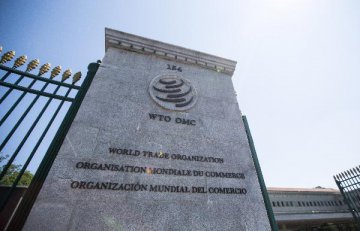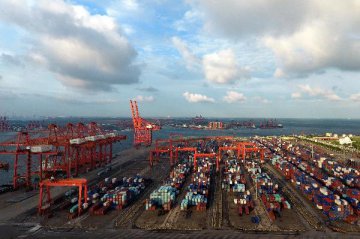
China will continue its technological upgrading and deepen its links with emerging markets amid the China-US trade tensions, said a recent report by the Hongkong and Shanghai Banking Corporation Limited (HSBC).
This report held that as long as China maintains open policies on foreign trade and inbound investment, it will stand a good chance of successful industrial upgrading despite some short-term impacts from its trade tensions with the U.S.
It believed China would remain open-minded about foreign direct investment and foreign companies, citing the public speech of a senior Chinese official and the advent of foreign companies like Tesla, Inc., which recently got permission to set up its fully-owned factory in Shanghai.
At the World Robot Conference held in mid-August, China’s Vice Premier Liu He said China would keep its door open to foreign investment and protect foreign companies’ rights.
The “Made in China 2025” plan would not see changes in its substantive aspiration but might experience reforms to the less substantive aspects such as policy designs and implementations, the report said.
Furthermore, China’s potential to upgrade and innovate lies in its own capabilities, as shown in four fundamental factors.
China’s one-billion workforce above the age of 15 nowadays is better educated, thanks to rising education expenditure, which now accounts for four percent of its GDP. For the past few years, over seven million graduates in China left universities annually, and the majority of them studied science, technology, engineering and mathematics (STEM).
China’s infrastructure development, riding on annual investments at 8 percent of its GDP for the past fifteen years, helps to cut logistics costs, spread good ideas, and enlarge the domestic market.
Its domestic market is rich in opportunities. Consumers in China are open to changes in spending patterns and lifestyles, and this allows businesses to achieve success faster with higher rewards, as evidenced by the success of Internet giants like Baidu, Alibaba, and Tencent, or BAT.
Policy support is strong. China is committed to rolling out policies to attract talents and encourage companies to spend more on research and development.
The report underscored its belief that links will be deepened between China and the emerging markets.
For the past decade, China has been moving up the global value chain and shifted from selling labor-intensive products to developed economies to targeting its electronics and machinery to emerging markets. Regarding these products, there is a natural complementarity between China and the emerging markets, which lays the foundation for more opportunities.
In 2017, these markets imported 2.9 trillion U.S. dollars’ worth of electronics and machinery, of which 21 percent came from China. For the same year, 59 percent of China’s exports were to the emerging markets, as compared to a ratio of 19 percent to the U.S., 16 percent to the Eurozone, and six percent to Japan.
These stronger links can serve to cushion the shocks of the China-U.S. trade tensions. A 1.3-percentage points export expansion to these emerging markets would be enough to balance a possible 3.8-percent decline in China’s exports to the US under the 25 percent extra tariff on 200 billion U.S. dollars’ worth of Chinese goods, the HSBC report calculated.
The report predicted that trade between China and the emerging countries, based on an annual growth rate of five percent, would amount to 2.8 trillion U.S. dollars by 2025. These robust trade and investment links would bring broad-based growth opportunities to all countries involved.























Latest comments